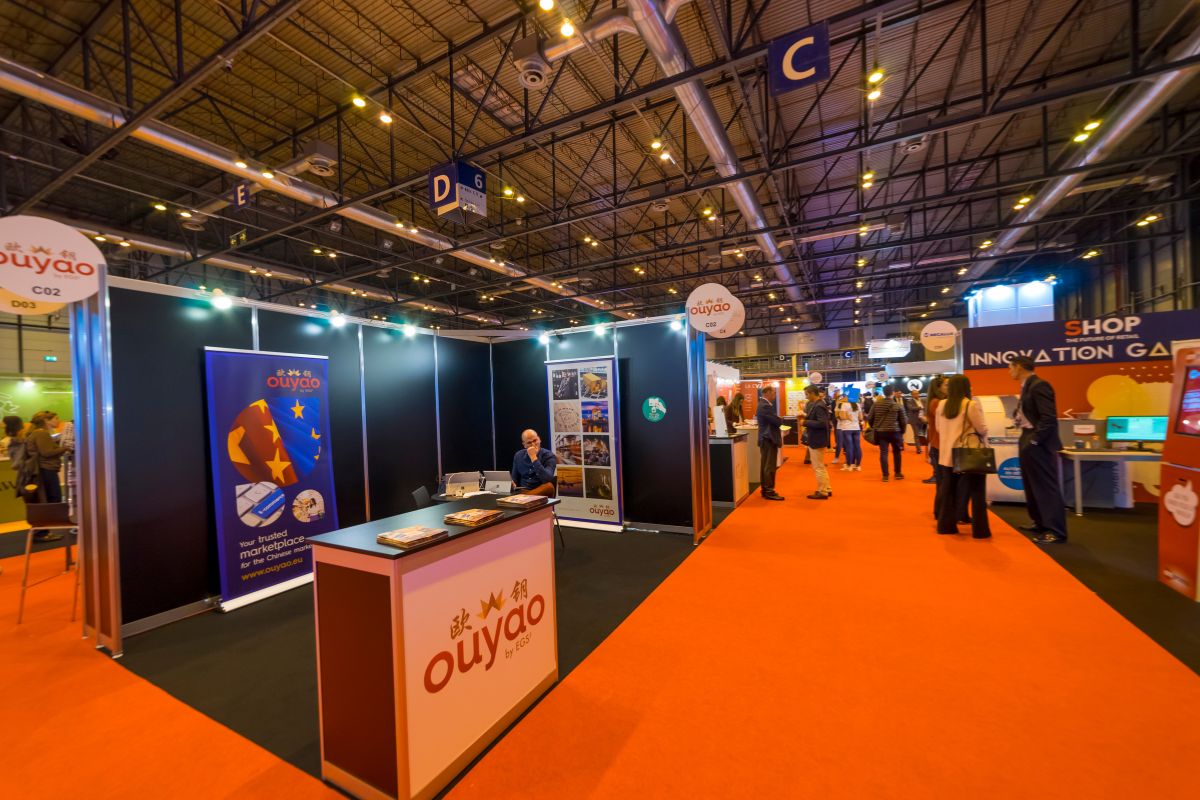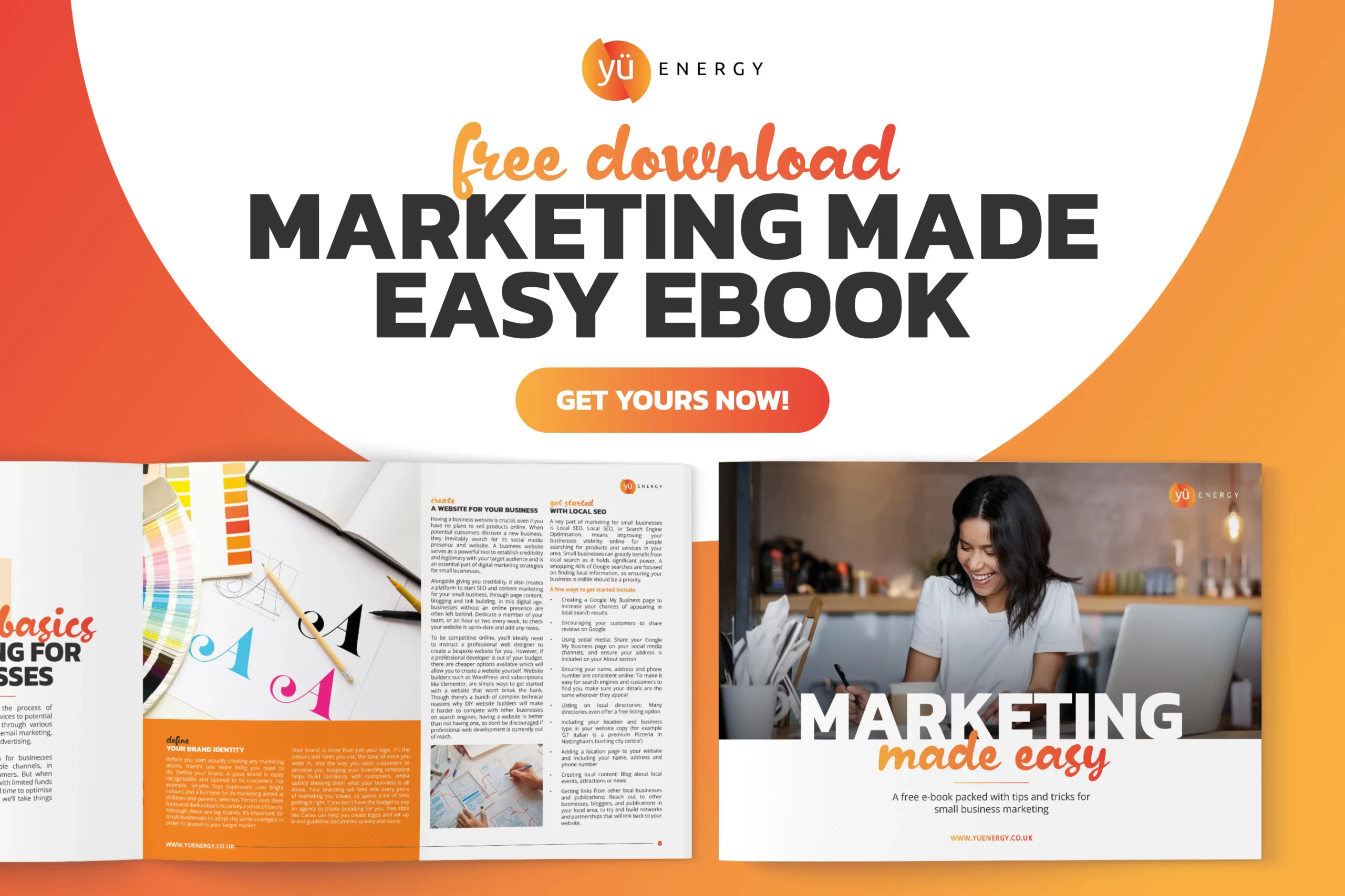Introduction
If you’re looking for a way to promote your business whilst reaching a new audience and creating some valuable business connections, exhibitions and events are a great place to start. Whether you’re heading out to your first exhibition, or you want to level up your events game, our guide is here to help you create event marketing strategies that are sure to make your business stand out.
What Are the Benefits of Exhibitions for Businesses?
Whether you’re a B2B or a B2C company, there are lots of ways your business can benefit from attending exhibitions. As well as being a powerful platform for you to promote your business and products to new audiences, you can also foster valuable connections with other professionals in your industry and get a good look at what your competition are up to.
By attending exhibitions and events, you can gauge the market, finding out what people are interested in and looking for, whilst also getting unfiltered, in-person feedback on your products and how consumers are using them.
It is important to create a strong event marketing strategy so that you can make the most of the exhibitions and events you attend, and leave having gained some new prospects, as well as professional networking connections.

Choosing the Right Exhibition for Your Business
Before you start putting any plans into place, you need to make sure you are choosing the right event for your business. Research the best exhibitions for your sector, taking into account attendee numbers, demographics, and dates. Reach out to event organisers for more details, asking for statistics from previous events and floorplans for the event you might want to attend. You should also look at the theme of the exhibition and the kinds of businesses that have attended in previous years. This should give you a good idea of whether the event is right for you.
Target Audience
Another factor to consider that will help you plan your event marketing strategy is to define your target audience. Are you aiming to reach new customers, investors and business partners, or maybe even new staff recruits? Think about how you will be able to attract and engage them with your stand and what you have to offer them. Many event organisers will have statistics they can share with you on the types of delegates that attend their events. These stats can tell you everything from job title to average spend and are a great insight for planning your events.
Budgeting for Events
Before getting started, you will also need to set your budget. Exhibitions and events can cost anything from a few hundred pounds to tens of thousands. This will depend on the type of event you are going to and what you’re hoping to get out of it.
As well as the cost of the event, you’ll need to take into account costs such as:
– Any exhibition graphics
– Additional stand costs such as electricity costs
– Merchandise and giveaways
– Public liability insurance
– Travel and transport
– Accommodation
Do as much research as possible and outline rough cost estimates so you can work out what is viable for your business. Try to work out your return on investment – whether that’s the number of items you would need to sell to make your money back, or the brand awareness you think the event could generate.

Marketing Ideas for Events – Planning Your Event
Before heading out to any event, it is important to ask yourself why you are going. Sit down with your team and agree on your objectives before you start putting any concrete plans in place. Are you going with the aim of selling products? Getting contract sign ups? Perhaps you’re using the opportunity to launch a new product to a live audience and get feedback before you start selling, or maybe your main aim is to mingle and check out your competition. These aims will shape your event marketing strategy, so be sure to discuss this with your team before you start making arrangements.
With these objectives in mind, you should now be able to plan how you will measure your success, whether that’s in sales, signups or feedback.

Event Marketing Strategies – Who and What to Take with You?
So, you’ve decided where you’re going and what you’re aiming to get out of it, now it’s time to start planning what you’re going to take with you to ensure you make the most of your exhibition.
Who
Starting with your team, you should select knowledgeable members of the team who have good public skills and feel comfortable talking to potential customers and investors in a busy exhibition setting. Remember, having too many people at your stand may look intimidating to customers, but too few may mean you cannot cope with demand. Consider the size of your stand, the number of delegates expected at the show, and covering breaks.
What
Another key point to consider is your merchandise and promotional materials. This is key in attracting people to your stand and ensuring they leave with information on your business and having had a positive experience. This could be anything from promotional brochures and business cards to free samples and novelty gifts.
Whilst freebies are fun and can be a great way to give people a taste of your products, or something to remember your brand by, you need to be careful not to go overboard giving things away that do not have a commercial link. Try to pick merchandise that offers value to your customers and gives them a physical reminder of your business to follow up on later.
Try to find products that fit your brand. For example, if you are an automotive business, branded car air fresheners are a fun and useful piece of merchandise, whereas a catering company might opt for reusable travel mugs or cutlery sets to better fit their brand.
Tried and tested merchandise items for events and exhibitions such as pens, keyrings and stress balls often go down well, but if you’re able to find more unique products, this will help you stand out against your competition.
If you are on a tight budget, items such as business cards and brochures full of information about your business and services will likely be more valuable to you than branded pens, so be sure to consider where your funds will be best allocated.
There is also a rise in sustainable gifting, as delegates become more aware of the impact of events on the environment. Many merchandise companies will have whole sections of sustainable products available, from bio-degradable pens to bamboo phone chargers.
You will also need to think about your exhibition stand design. This will be the first thing your potential connections will see, so it’s important to make it eye-catching and make the most of the space you are given, using multiple levels. There are lots of different types of exhibitions stands, and the right one for you will depend on your budget and the space you have to utilise. When designing your stand, you will need to find a balance between functionality and creativity while keeping in theme with your business and marketing goals.
It is also important to consider the practicality of transporting and assembling/ dissembling your stand before and after the exhibition. If you’re exhibiting at a large event, you may want to consider hiring a third-party to build your stand or assemble your shell scheme. On the other hand, if it is a smaller event with just a table space, you may only need a few items such as a tablecloth, pull-up banner, and any promotional materials.

Event Marketing Strategies – Promoting Your Event
A key factor in ensuring the success of your event is promotion. You should start advertising your event at least a couple of weeks in advance to create anticipation and let people know what they can expect to see from you. A great way to start your event marketing is to give people a taster of the things you will be offering at the event, for example, teasing new product releases and giving previews of your stands set up. Make sure they know that by coming to your event, they will be getting something that they can’t just learn from your website!
Let delegates know who will be attending. One of the key things that draws people to events is the fact they will meet your team face-to-face. Introduce attending team members on social media, including a photo and short biography.
Social media is one of the most effective methods of promoting your event, through use of features such as countdowns and hashtags. You could also include a promotion in customer newsletters and communications emails to help spread the word.
For more ideas and inspiration on marketing techniques, download our free marketing eBook here.
Making the Most of Your Event
To make sure you get the most out of your event, consider scheduling in meetings between clients and your team members on the day. You could use a platform such as Calendly to get delegates to pre-book these meetings.
Make sure all team members know what the objectives are, and that they are armed with enough knowledge to answer customer questions. Encourage them to stand towards the front of your event space, look approachable, and engage with passing delegates.
If you are collecting leads at the event, an online form is a great way to safely collect customer details. There are lots of platforms available to create forms, and you could use a laptop or tablet to present them.
You could also consider hosting a competition or giveaway to collect leads or contacts and get people to engage with your stand. Make sure you clearly communicate what delegate’s details will be used for and comply with any GDPR regulations.
When the day of your event rolls around, remember that you are there as an attendee as well as a presenting business! Take the opportunity to mingle and check out the other stands to see what your competitors are doing, as well get a good gauge of what customers are interested in, and which kinds of products are getting the most attention.
It will be a busy day, so try to plan ahead and figure out who you want to speak to, making sure to schedule in enough time to visit everyone on your list.

Post-Event Marketing Strategies
Once your event is over, it’s time to revisit those goals you set in the beginning. Look at your stats – How many products did you sell? Did you get any new client sign-ups? You should also consider more qualitative measures of success such as how much interest your stand got and the number of valuable conversations you had.
Be sure to have a debrief meeting with your team to discuss the event and how you can take your findings and use them to create an event marketing strategy for next time, setting new targets and goals and improving on the previous event.
Make sure you follow up promptly with attendees who visited your stand and expressed an interest in learning more about your business. If a delegate spoke to a particular member of your team, try and get that same team member to do the follow up to build a better relationship.
You could even ask them for feedback on their overall experience of the event and your stand. Remember – all feedback is valuable and can be used to help shape future events for your business.

Looking for more?
If you found this guide helpful, or you’re looking for more ways to step up your business’s marketing game, check out our Marketing Made Easy series for more tips and tricks, covering everything from polishing your social media, to creating the perfect website for your business!

 0115 975 8258
0115 975 8258


